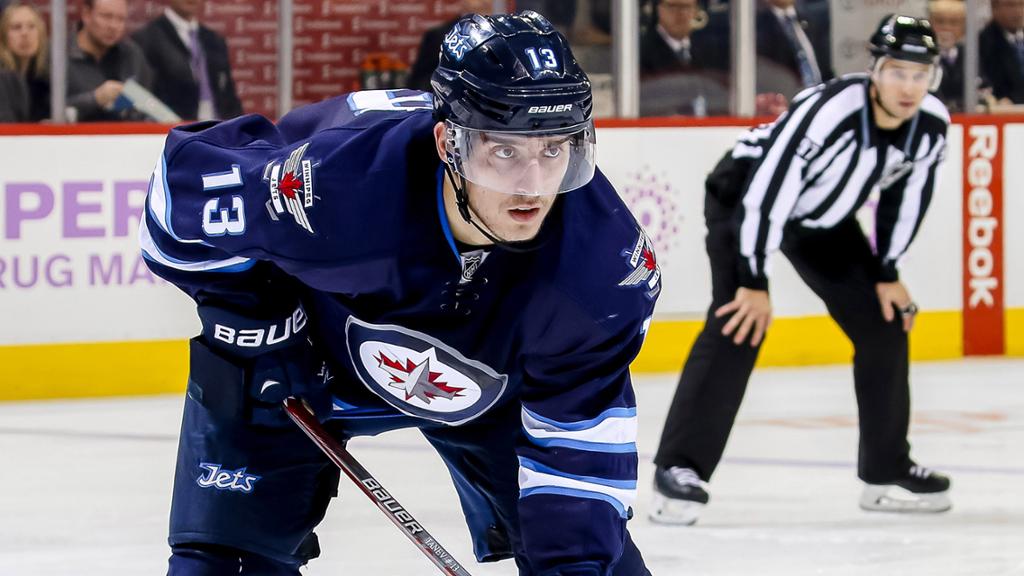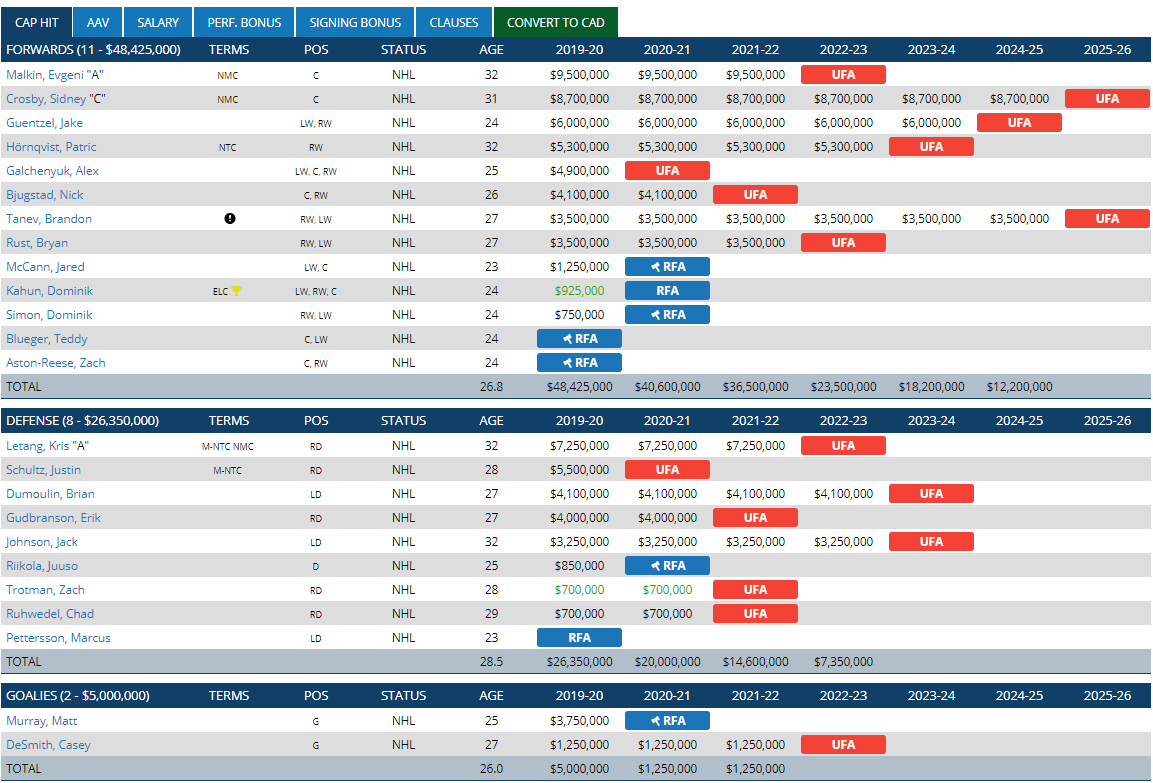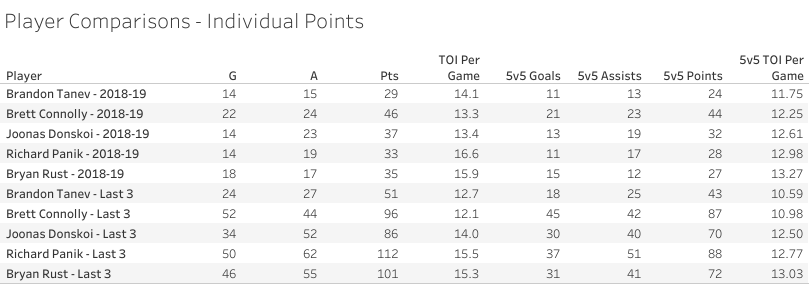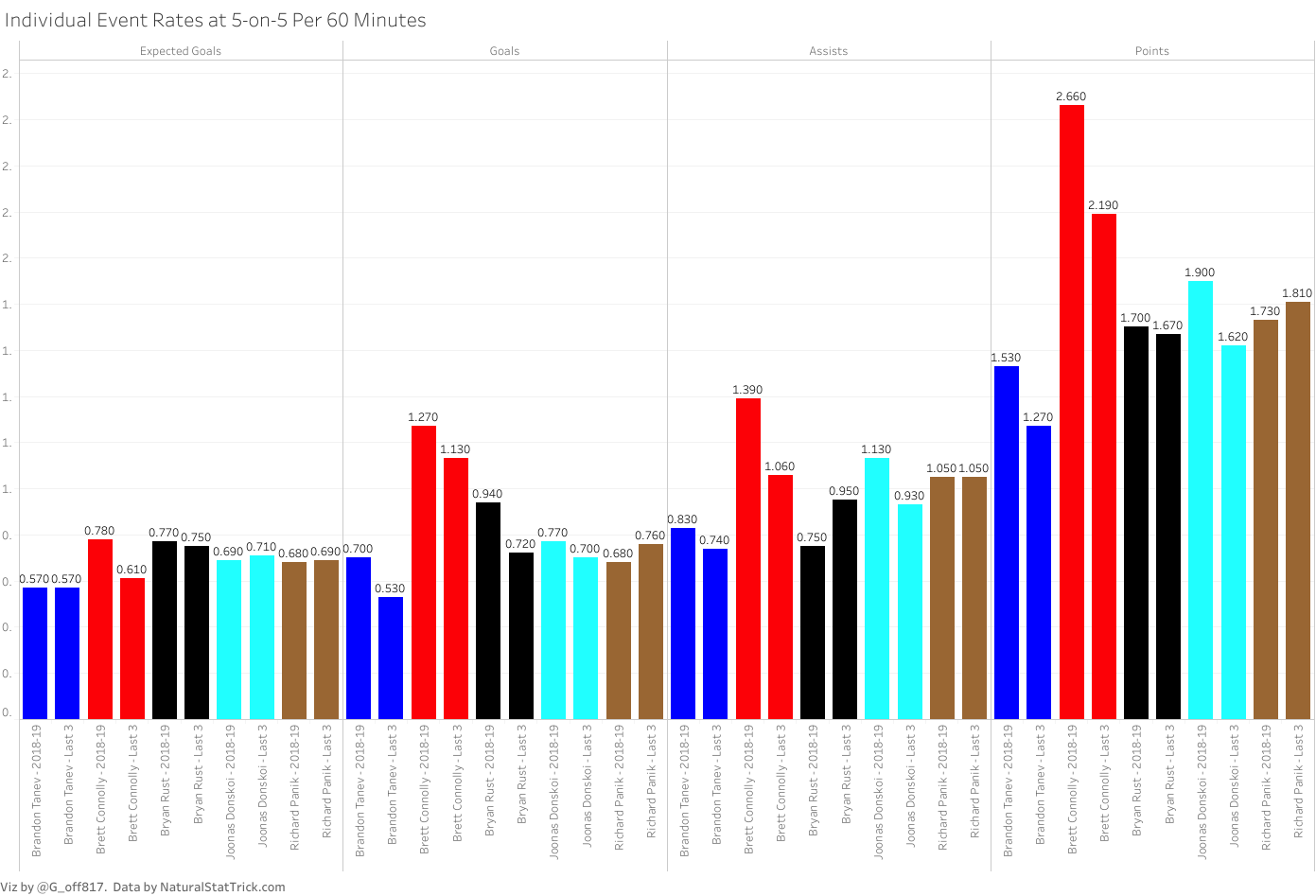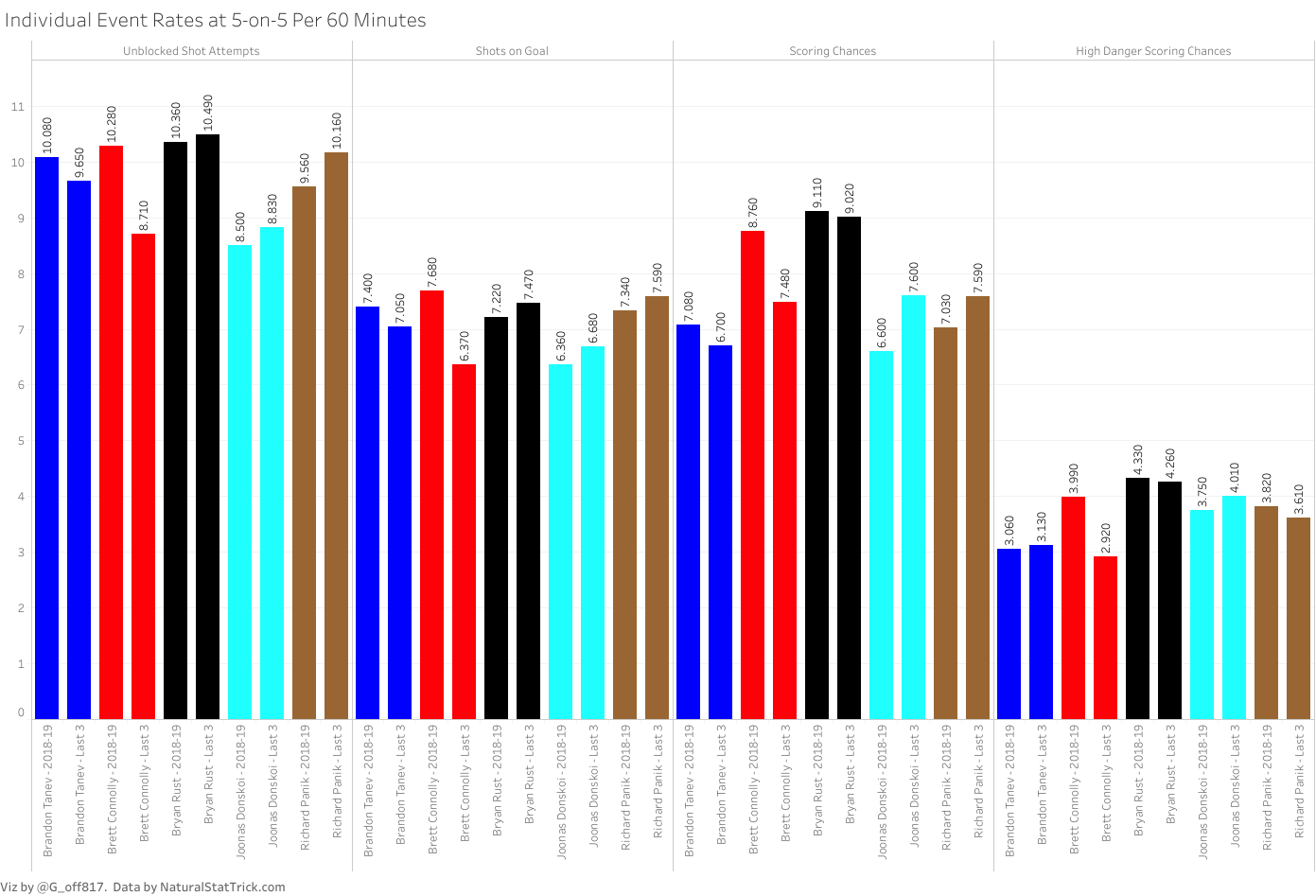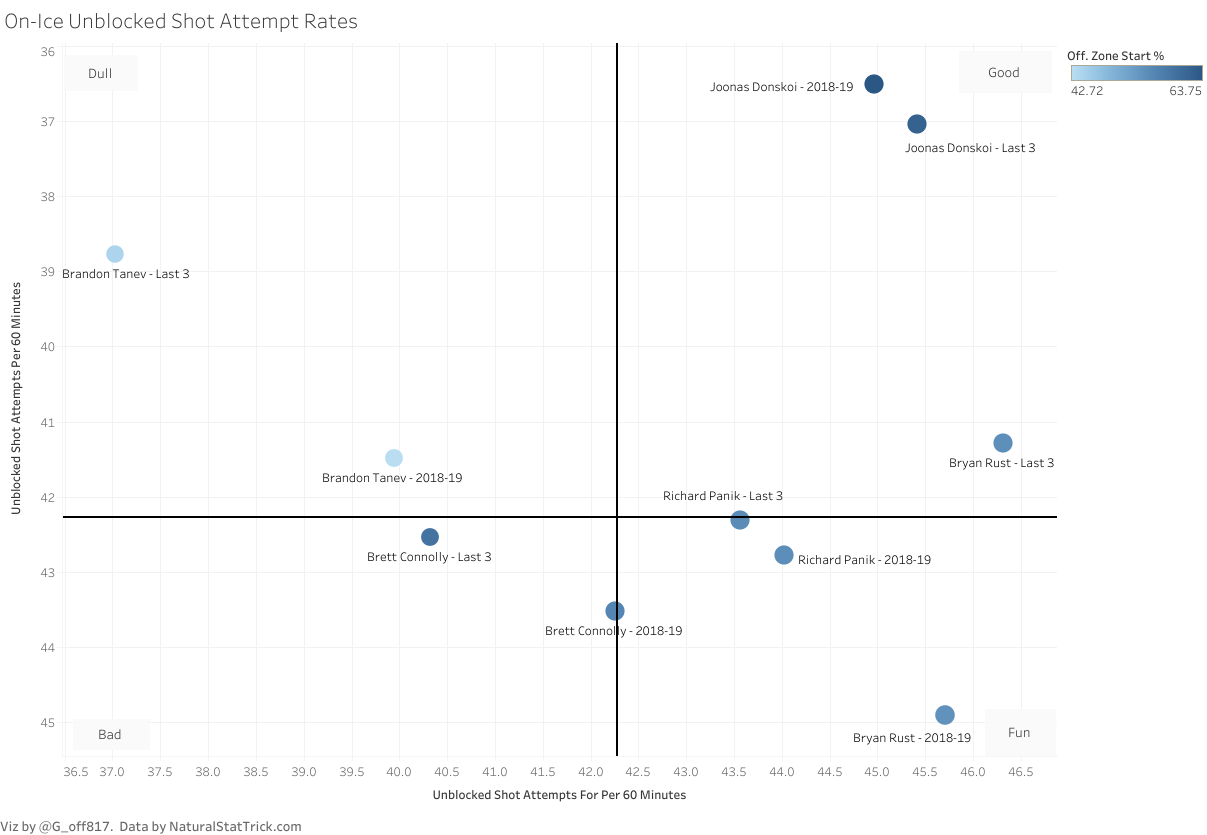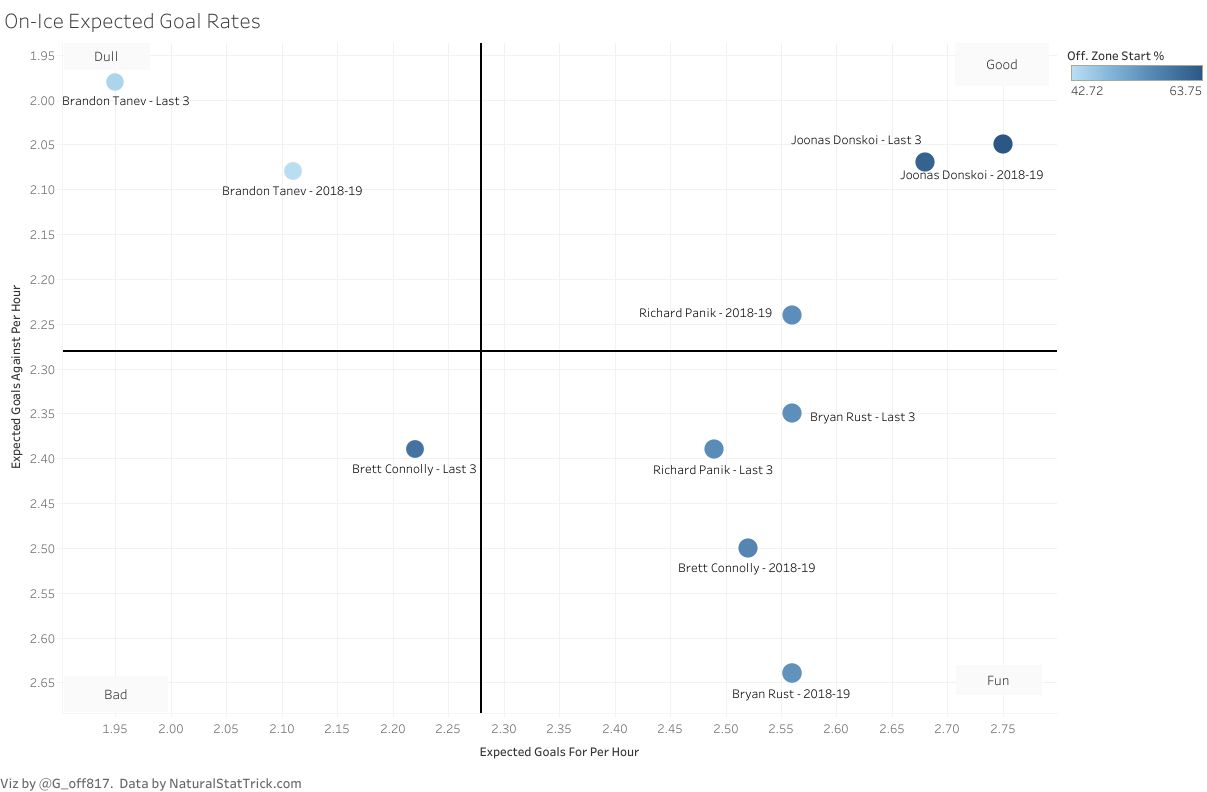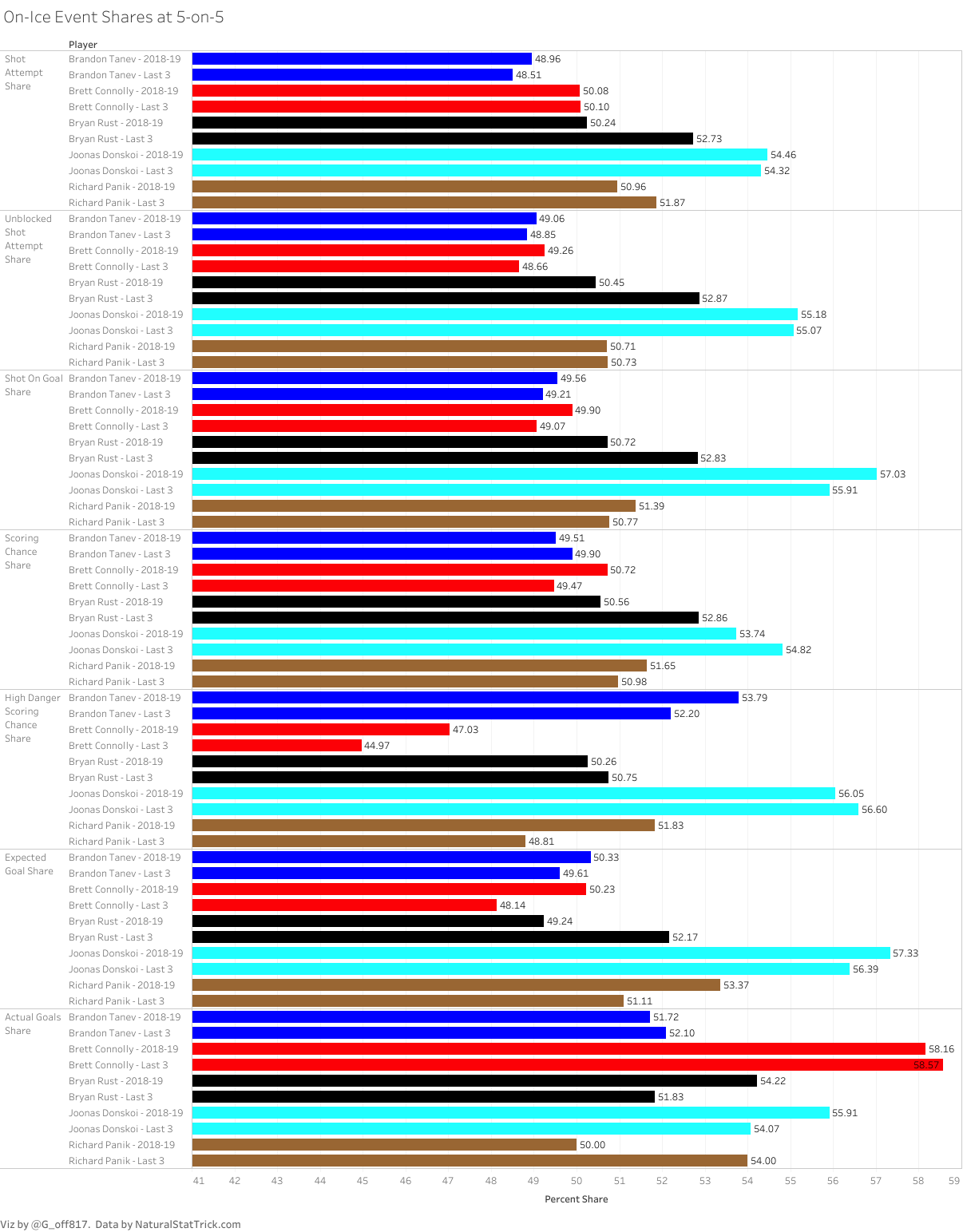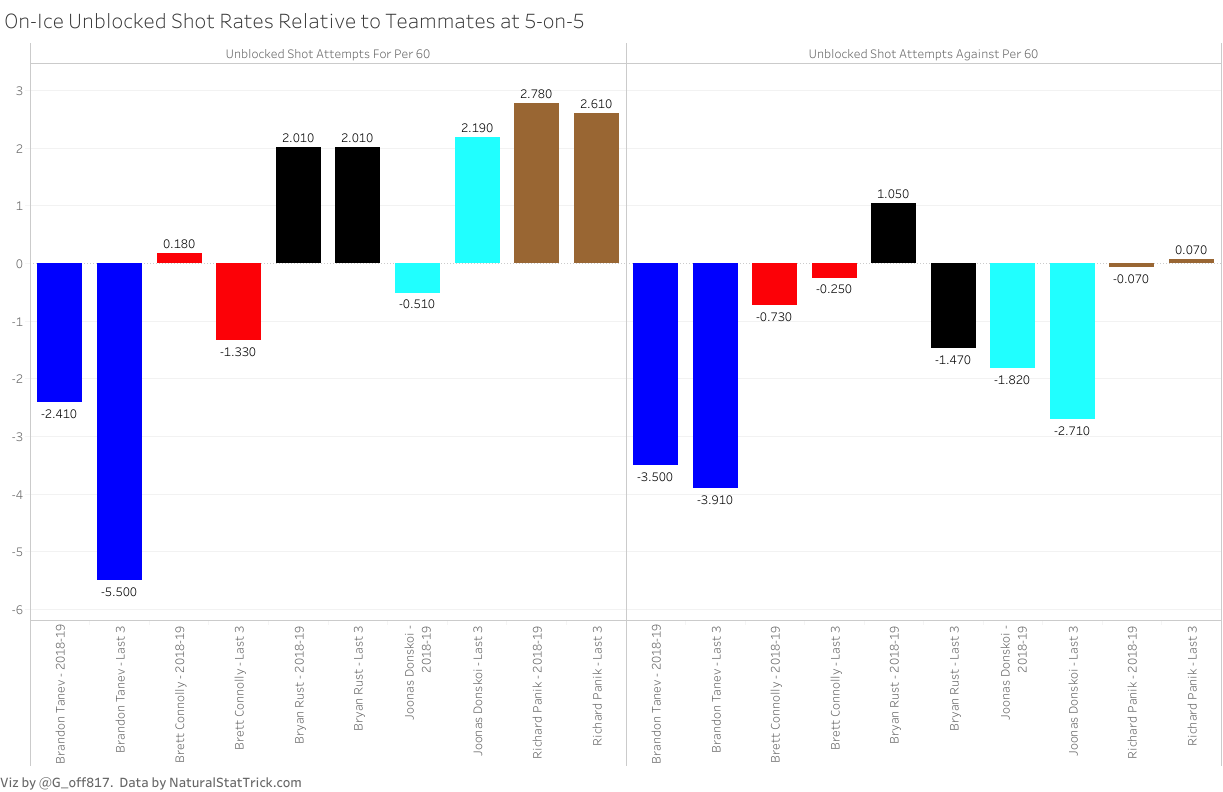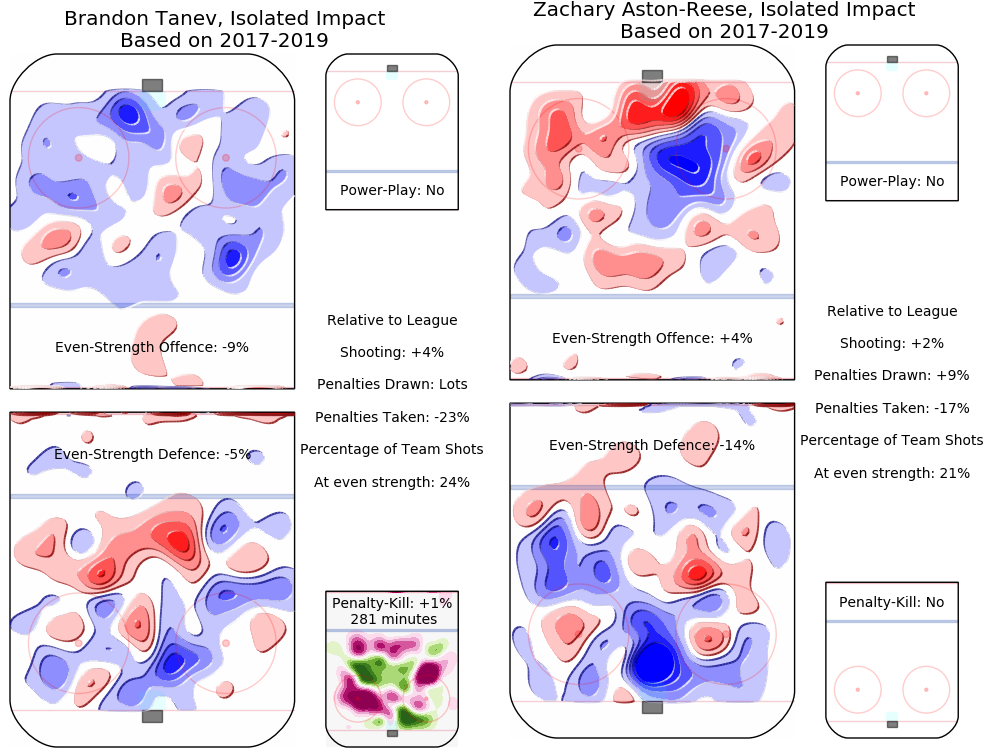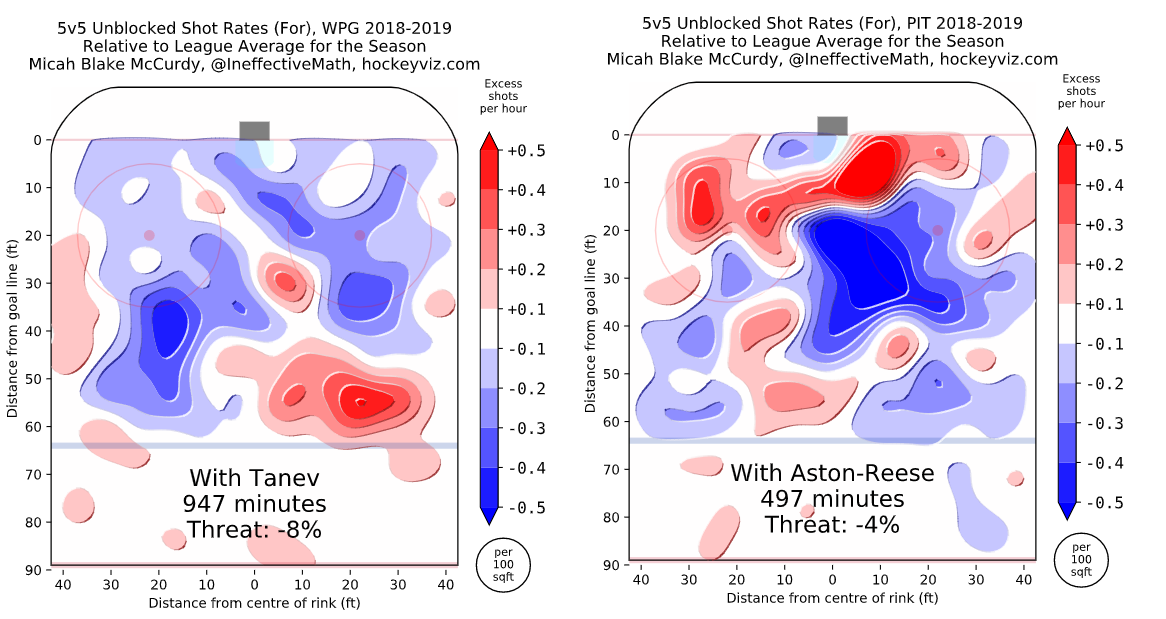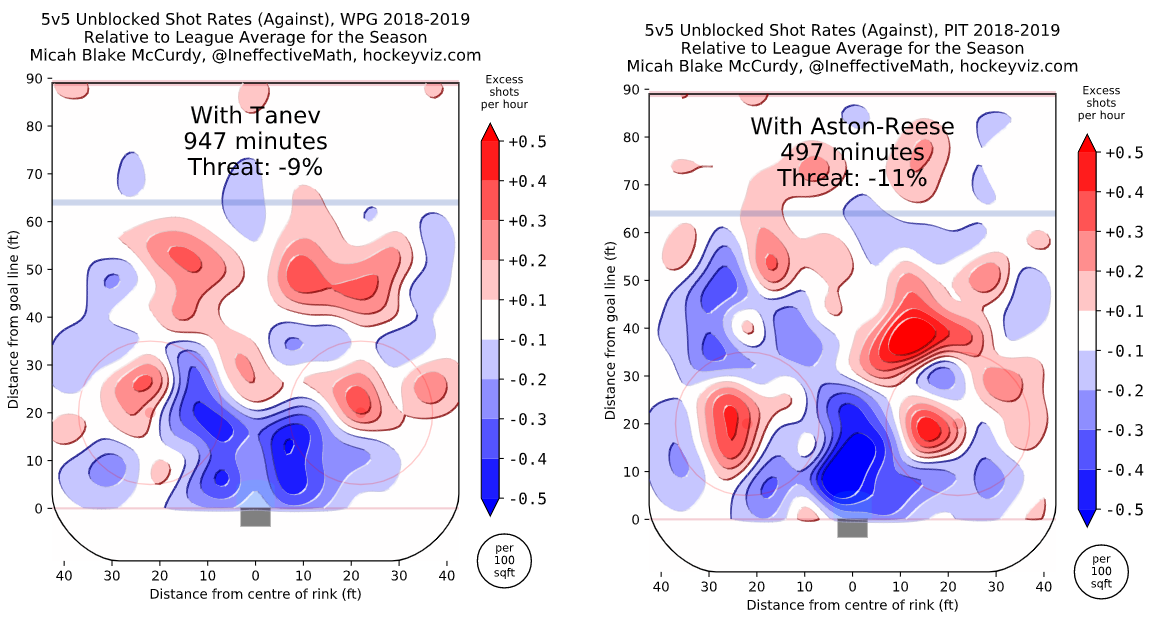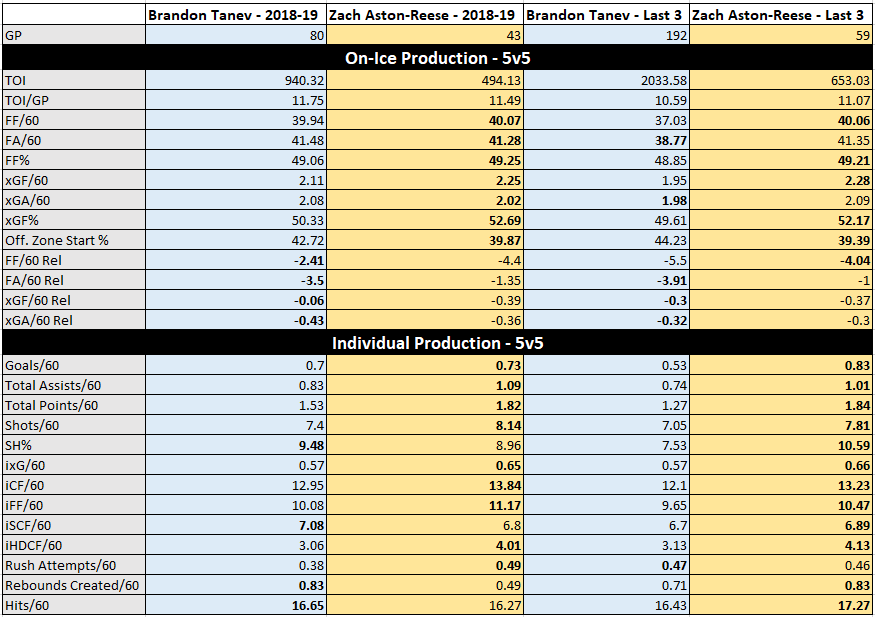With NHL Free Agency opening yesterday, big decisions, big terms, and big money were made across the league, including some franchise altering decisions.
Matt Duchene signed in Nashville for $56M across 7 seasons. Artemi Panarin (NYR), Sergei Bobrovsky (Florida), and Anders Lee (NYI) each also signed for 7 seasons for $81.494M, $70M, and $49M respectively.
For those players, it makes sense. With the competition on July 1 for names like that, you have to give max term to lure those players to your franchise, rightly or wrongly.
Via CapFriendly, there were a total of 7 contracts given out to unrestricted free agents of 5-7 years yesterday. Four of them were the above, two more included Tyler Myers (5 years, $6M per in Vancouver) and Mats Zuccarello (5 years, $6M per in Minnesota). Naturally, there are some age and usefulness concerns over those, but you can understand why they were given out.
The theme here, of course, is that all 6 of these players immediately step into their new lineups as the first- or second-best players in their respective positions and will continue to be for at least half of the term given to them (and probably more).
The 7th long-term deal given out yesterday, though, was by GM Jim Rutherford and the Penguins, handing 27 year old Brandon Tanev a 6 year deal worth $3.5M per year AAV. with a portion of the cap space (and then some) gained in moving Phil Kessel to Arizona for Alex Galchenyuk.
In a vacuum, $3.5M for Brandon Tanev probably isn’t the worst thing in the world for most teams. He’s fast, tenacious, and above average defensively, though doesn’t move the needle in the offensive zone. For a team that struggled icing solid defensive forwards beyond the likes of Dominik Simon, Nick Bjugstad, and Sidney Crosby last season, it makes some sense.
The issues with the deal come when you dig a little deeper beyond just what Tanev brings. First, let’s start with the Penguins, who aren’t “most teams and whose longest terms remaining now sit with Sidney Crosby and Brandon Tanev.
On top of that, the Penguins have just under $1.6M in cap space to work with (via Cap Friendly) and three restricted free agents to sign in Aston-Reese, Blueger, and Marcus Pettersson. Even on the low end of the conservative spectrum, they should make up around $3M combined, putting the Pens over the $81.5M threshold.
That’s a problem and it’s a problem of the Penguins’ own making.
The other problem with the deal is that Tanev, at 27, is what he is at this point in his career. That is: a 4th liner whose ceiling is a 4th line winger that may score you 30 points (he had 14G and 29P in 80 games last season) if you’re lucky.
Maybe on 10 other teams, he breaks through that ceiling and earns a 3rd line role, but given the Penguins depth chart, it’s hard to see him surpassing the likes of Guentzel, Galchenyuk, McCann, Kahun, Simon, Hornqvist, or Rust, all of whom are either younger than him and/or better than him today and will likely continue to be as their careers press on.
It also likely means that the Penguins are going to have to send more money out to fit in their RFAs, which is extremely normal and far from a negative thing (provided the right contracts are moved out). Toronto, in fact, has spent the last two weeks doing just that with monumental success.
If we are to take GMJR at his word, and there’s no reason why we shouldn’t at this stage, that money won’t be leaving from the defense group. In other words, he will presumably be sending out a better winger, likely Rust or Hornqvist, to accommodate an objectively worse one while leaving the blue line, which struggled mightily when Letang, Dumoulin, and Pettersson were not on the ice, largely the same. This, too, after moving on from Olli Maatta, a good defender, because he couldn’t move on from Jack Johnson.
https://twitter.com/G_Off817/status/1145479235353620480
On top of this all, there’s a disturbing trend seen from the marquee July 1 signings the Pens have made the last two years following the addition of new found cap space: Jim Rutherford has apparently been bidding against himself to get a player that they identified as wanting.
“We were willing to go as far as we had to go” – Jim Rutherford on signing Tanev
Johnson, through no fault of his own, signed on for 5 years with the word from the Penguins side of things being that term was given to fend off other suitors.
If reports are to be believed, this is what led to Tanev’s 6-year term: other teams wanted him too and all the while, his camp wanted something in the neighborhood of 4 years, $3M per year. That creates a perfect storm for someone willing to throw caution to the wind and ignore the market like GMJR repeatedly does.
But therein also lies the crux of the overarching problem: Just because a free agent wants that much does not mean you have to give it to him.
It’s possible to walk away from a bad deal.
You don’t need to go as far as you have to go.
This is especially compounded when considering other contracts given out to similar role players yesterday, namely Joonas Donskoi (27 – Colorado, Corsica’s #88 ranked LW), Brett Connolly (27 – Florida, Corsica’s #35 ranked RW), and Richard Panik (28 – Washington, Corsica’s #47 ranked RW), all of whom are slated to assume 3rd line (2nd line in a pinch) roles
All four were only given 4 year deals by their respective teams. Only Donskoi (4 years, $3.9M) found his AAV come in higher than that of Tanev’s (Corsica’s #95 ranked LW). Connolly wasn’t far off, signing to a $3.25M AAV for 4 years, while Panik’s $2.75M for 4 years made the Capitals better on their wing.
But, perhaps more importantly, each one of these players is likely a better player than Brandon Tanev both from an on-ice and individual perspective at 5-on-5, though a key thing to remember here is usage. Not a single one of them started a smaller percentage of shift starts in the offensive zone than Tanev last year or over the past 3 seasons.
Still, players are evaluated by the points they put up and Tanev is and has been behind the pack in that regard.
Included in this is Bryan Rust (Corsica’s #36 ranked RW), who is signed to the exact same AAV as Tanev. The situation surrounding Rust’s was slight different at the time of signing as he was a restricted free agent and a year younger than Tanev at the time of signing, but his production is worth considering here because of the value of the contract and the fact that Rust may be the one that gets moved.
From what you can see here, based upon the raw production and 5v5 rates per 60 minutes, Tanev is far and away left behind by his peers both last season, his best in the NHL, and over the last 3 seasons. Only in unblocked shot attempts and actual shots on goal does he find himself in among the other 4.
The on-ice results are a little bit telling as to why that might have been, again under the context of offensive zone shift starts.
There’s no denying here that Donskoi is far and away the premier player of this group in terms of 5v5 unblocked shot attempt rates, expected goal rates, and the shares of the entire gambit of metrics we look at. He also started the most shifts in the offensive zone, so it seems sensible to see that.
The upside with Tanev is that he comes advertised as a solid defensive forward and compared to the guys that got lesser contracts than him, we can see that both in the unblocked shot rates for and against per hour of 5v5 play (below) and the expected goal rates under the same parameters.
Defensively (right), no one really comes close to Tanev in suppressing more unblocked shots both this season and over the past 3 seasons. The problem, as we talked about in the immediate aftermath of the signing, is that Tanev is a bit of a black hole in the offensive zone and saw a significant amount of his 5-on-5 time with one of the best shutdown centers in the game in Adam Lowry.
To that end, the Jets saw 5.5 fewer unblocked shot attempts directed on net when Tanev was on the ice over the last 3 seasons compared to when he was off of it. That’s not insignificant.
The moral of the story here is that, while Tanev as a player is not bad by any stretch of the imagination, his contract is. And for what he does and what he brings, particularly in the context of four 3rd liners on more team-friendly deals, this seems like another miss for GMJR.
In other words, a 4th liner that doesn’t contribute offensively should not be getting paid $3.5M.
This is especially true when you consider that the Penguins already have a player like him in the organization who happens to be 3 years younger, hits players at a similar clip, and will likely come at 1/3 of the price: Zach Aston-Reese.
Across 43 games last season, ZAR scored 8 goals and 17 points, just 12 fewer than Tanev did in 80 games. ZAR also has 23 career points in 59 games spread across parts of two seasons, 6 fewer than Tanev scored all of last season.
Isolating their respective impacts and the results are impressive for Aston-Reese, via HockeyViz.com:
Relative to the rest of the league over the last 3 seasons, their shooting, penalties taken, and percentage of team shots at even strength aren’t very different. On the defensive side of things, ZAR is a machine, making teams a negative overall Threat.
Offensively, he’s a standout too, finding himself on the positive side of the Threat Analysis, leaving Tanev in the dust.
Things were slightly different for ZAR this season in terms of what he saw with his teammates relative to the league. It should be noted that his Threat analysis, though negative, is still better than that of Tanev’s.
Moreover, the Penguins with ZAR on the ice still generated more from higher danger areas of the ice compared to the rest of the league while Tanev did not. Location (and the red color) is key here.
Defensively last season, too, it was more of the same. ZAR is seen here to have been better on that side of the puck, though marginally. Neither player saw his team give up much directly in front of the cage, which is encouraging enough.
Beyond the HockeyViz.com shot maps, we can see below just how similar these two players are, with the individual production scale tipped solely in ZAR’s favor both last season and averaged over the last 3 (though Aston-Reese only has data for the last two seasons):
The interesting thing here is that, individually, ZAR does much more despite starting a smaller percentage of shifts in the offensive zone compared to Tanev. Relative to the rest of the team, ZAR’s unblocked shot attempts for and expected goals for take a slight knock, which can largely be explained by Crosby and Malkin seeing the ice when he is not. The same can be said about Tanev with respect to Scheifele, Laine, etc. Still, overall in the per 60 minute rate of unblocked shot attempts for and expected goals for, ZAR is king.
Put another way: Zach Aston-Reese is already Brandon Tanev in many ways and is better than Tanev in others.
And that’s the problem.
It’s not that Tanev seems to be a bad player. He’s not.
Were there better, more affordable options out there in Free Agency? Sure.
But the real problem is that the Penguins’ General Manager deemed it necessary to go out, spend money the Penguins didn’t really have, and give term to a player that the Penguins already had in their organization that can and will do the exact same job and is still growing and maturing.
That’s Cap Mismanagement 101.
It doesn’t matter that in years 4, 5, or 6 of Tanev’s deal, the Penguins window will be closed.
What matters is that the Penguins aren’t markedly better than they were a day ago (or even a week ago), have more salary cap issues than they had when Phil Kessel was still a Pittsburgh Penguin, and are backed into a corner with seemingly no direction as the Crosby/Malkin/Letang Cup Window begins to speed shut.
And we’re just getting started.
Add The Sports Daily to your Google News Feed!
